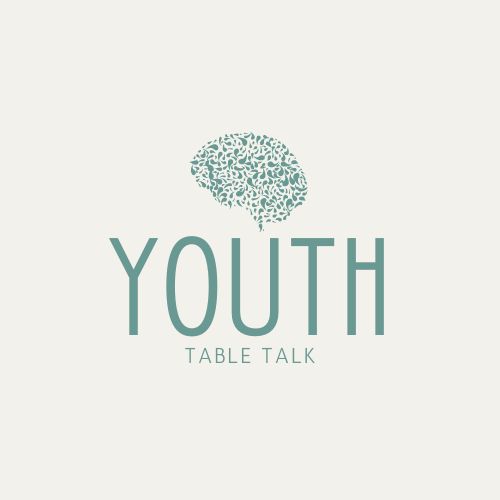For decades, Vivid Dreams have fascinated psychologists, writers, and philosophers alike. These chaotic combinations of emotions, memory, and sensations, give our subconscious mind the chance to speak. Dreams can tell us stories and teach us lessons. They have the power to transform everyday information into something mind-blowing but the problem is, we are hardly ever aware of our dreams until after they have passed us by. Despite trying our best, we struggle to recall anything more than a face or a feeling.
You try everything to remember that fantastic dream you just had but the details slip through your fingers like sand granules. The fleeting nature of our dreams is one of the main reasons people are so captivated by them. They are mysterious and challenging. Many scientists have speculated that they contain more than just random emotions and memories.
Our dreams may harbor secrets about who we are and what we want but how do we access our dreams if we don’t remember them? In the year 1913, a Dutch Psychiatrist started working on the phenomena of dreams and he figured that a vivid dream is a dream where you are actually aware that you are in fact dreaming. You attain the ability to explore your unconscious mind. Some individuals have even discovered the methods to manipulate a dream’s content while inside it. Surely, this phenomenon was not known until the 20th century but the concept is significantly older.
Over a thousand years earlier, Buddhist monks in Tibet used dream yoga to access and control their dreams but it took them years of intense meditation and practice. Luckily, you don’t have to be a master of Tibetan Dream Yoga to be able to remember or manipulate your dreams. In fact, anyone can do it under the right circumstances. Vivid dreams might seem like something out of a movie or a storybook but trust me they are at your fingertips. So here are 4 easy steps to explore the worlds you create while sleeping.
Dream Memory
Since so many people have experimented with vivid dreaming, there are a number of different techniques to make it happen. Some, like Dream Yoga, trigger vivid dreams while they are still awake. You enter a meditative dream state, which allows your mind to wander into your subconscious. Other methods rely on your sensory engagement with your surroundings. The idea here is to prepare your brain and body to enter a new type of sensory environment. These techniques can be slightly challenging for beginners, so I am going to start with something much simpler.
Mnemonic Induction Of Vivid Dreams
In this article, we will talk about a surprisingly effective process that stimulates vivid dreaming via mental preparation and self-talk. You need to be able to strengthen your memory in order to remember and manipulate your dreams. You probably used a fair share of mnemonics during your academic life to memorize, for instance, complex order of operations. As you might have guessed, memory plays a major role in your ability to vividly dreaming.
Before you can dive in, you have to train your brain to remember the content of your dreams. Don’t you worry! It is not as hard as it sounds. All you need to do is keep a dream journal. When you wake up in the morning, immediately write down everything you can remember. People, places, and feelings. Hey, it is all useful. The more information the better. Bit by bit, each detail will accentuate your dream recall rate. Eventually, you will be able to remember one or two dreams every morning.
So why is this so crucial for vivid dreaming?
First of all, you need o to be able to remember vivid dreams when it occurs. Otherwise, what’s the point? You might be vividly dreaming more often than you think but you will never know until you improve your dream recall. Most importantly, this technique will show you how vivid your dreams are. Not every dream has the potential to be vivid. Some are vast and extremely intricate. Others are brief and superficial. However, when you wake up in the morning, it is quite difficult to tell the difference.
You can use your dream journal for more sophisticated dreaming. It is not just so you can recall your dream efficiently, but because they become more complicated as your brain is learning to dream bigger. Like any other habit, you get better at it the more you practice. No matter how vivid your dreams are right now, this method will help them grow.
Speak It To Life
Now that you have established a dream recall, the next step is to practice vivid affirmations. Normally people use affirmations to bring some positive changes in their personality or those around them. To feel more secure or motivated, you might repeat statements like, “I am aware of my capabilities”, “I can achieve whatever I set my mind to”, or “Challenges are opportunities to grow” etc. This repetition slowly but surely persuades your brain to believe what you tell yourself. But why does this work? Well, on a conscious level, affirmations don’t really help much. The conscious part of your brain can easily tell the difference between what is real and what is imaginary. However, your subconscious part of the brain cannot distinguish between the two. Also, your subconscious mind controls 95% of your brain. Your subconscious begins reacting to these positive messages like they are real, which alters your behavior. This can create confidence, empathy, and even vivid dreams.
You can use vivid affirmations right before you go to sleep. You need to convince your subconscious that what you are saying is about to happen. When you are feeling drowsy, begin repeating phrases like,” I will remember that I’m dreaming”. As you get closer to falling asleep, transition to affirmations such as, “the next thing I see will be a dream”. The goal is to verbally assure your brain into a dream-like state. In other words, you convince your brain that you are about to dream and so do you.
Visualizing Trajectory
It is critical that vivid dreaming is the last thing you think about before dozing off but when you are lying in bed, feeling cozy and relaxed, it’s easy to let your mind wander. This step takes advantage of that natural tendency by targeting your creativity. In the majority of cases, losing your concentration before knocking out reduces your chances of vivid dreaming.
What if you are losing your concentration by diving into a dreamy state? Just like affirmations fool your subconscious, visualizations create the illusion of entering a dream state before it actually happens. You can often convince your brain that you are dreaming before you even fall asleep.
Start by re-imagining a previous dream. Of course, it helps if the content is fresh in your mind. While laying in bed, skim through your dream journal. Ideally, you should opt for a dream that was particularly vivid or powerful. After finishing your affirmations, try to place yourself at the end of that dream. If you can, try to create a dream environment that’s sustainable enough to support a vivid dream. Ultimately, your objective is to fall asleep in the middle of a daydream. Although it won’t happen every time, there is a high chance that daydreams will transform into vivid dreams. Sometimes, it happens so quickly that you don’t even notice the transformation. However, at this stage, you need some way to distinguish between a vivid dream and reality.
Wake-Back-To-Bed
If you are finding it difficult to stimulate vivid dreaming with the help of memorization, there is another simple step you can take to make it happen. It is called the “wake back to bed” method. All you have to do is set your alarm two hours prior to you are supposed to wake up. When the alarm goes off, lie in bed for about 20-30 minutes. During that time, you will feel groggy and sluggish but that is a good thing. This method is designed to help you enter REM sleep faster. REM sleep is the sleep that occurs at intervals during the night and is characterized by rapid eye movements, more dreaming, bodily movements, faster pulse, and rapid breathing.
REM sleep is when most vivid dreams happen. So the goal is to minimize the interval between your vivid affirmations and REM sleep. The combination of the memorization method and the wake back to bed method was tested in 2017. Researchers divided 170 participants into three groups. One group just used the memorization technique. The other group used only the wake back to bed technique. The third group used both of the techniques combined. Nearly 60% of the participants had one vivid dream in at least one to two weeks of practice. And I am sure that number only increased over time. So don’t wait! With these four easy steps, you can see a one-of-a-kind experience for yourself.
Talia Siddiq, is a qualified MBBS doctor and she is doing specialization in psychology. She has a good experience of working with people suffering from mental issues. She has written extensively on most common yet unattended issues faced by the youth such as psychological issues, relationship problems, self-harm, addictions, career counseling, financial freedom etc.
Do you want solutions for your social and psychological problems?
Then Subscribe to our newsletter

